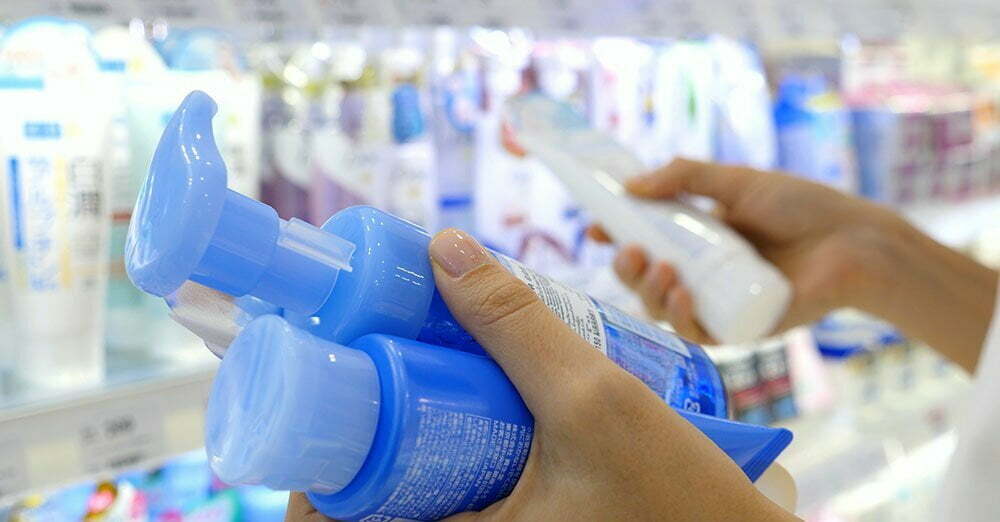Cosmetic product labels are very varied. Some dazzle with teenage-liked vibrant colors and graphics, while other seem to highlight their top shelf character by subdued, minimalist, and professionally-looking image. Despite this diversity, however, every label of a cosmetic product must have a number of specified mandatory elements and information.
What information must be given on a cosmetic label?
Regardless of the design, the label must always give the information specified in Regulation (EC) No. 1223/2009 of the European Parliament and of the Council of 30 November 2009 on cosmetic products. This information includes:
- the name or registered name and the address of the responsible person – such information may be abbreviated in so far as the abbreviation makes it possible to identify the manufacturer or importer
- country of origin – for products imported from outside the EU
- weight or volume of the product – the nominal content at the time of packaging, given by weight or by volume, except for:
- packaging containing less than five grams or five milliliters,
- free samples and single-application packs,
- bulk pre-packages, if the required product information is provided on the individual unit containers in such bulk packages
- date of minimum durability – the best before date (BBD), and for products with BBD shorter than 30 months – the period after opening (PAO) as well,
- any special warnings as regards use of the cosmetic product – information about inflammability, potential irritations, etc.,
- batch number of manufacture or another reference for identifying the cosmetic product
- function of the cosmetic product, unless it is unambiguously clear from the product presentation,
- a list of ingredients according to the International Nomenclature of Cosmetic Ingredients (INCI), preceded by the word “ingredients.”
How to describe the composition of the product on the package?
The composition of a cosmetic product is a criterion of growing significance for more and more potential buyers. The presentation of the list of ingredients is therefore particularly important.
Pursuant to the existing regulations, the ingredients of a cosmetic product must be listed in descending order by weight. It means that the ingredients listed first are the ones of the highest concentration or volume. However, this rule only applies to substances in concentrations above 1% – the remaining ingredients can be listed in any order.

Cosmetic Raw Materials
Natural cosmetic raw materials are not only technological additives affecting consistency, structure, and product durability, but also plant-based biologically active substances that improve properties and add aesthetic value to manufactured cosmetics. We offer high-quality cosmetic raw materials of both categories, sourced only from verified manufacturers and also available in wholesale distribution.
Similar freedom is granted in respect of perfume and aromatic compositions, which can be referred to by the general terms of “parfum” or “aroma”, without listing the specific ingredients. Noteworthy, however, the regulations specify only the minimum requirements. It is allowed, for example, for INCI names to be followed by Polish equivalents of the key substances.
Additional information provided on cosmetic product labels
Besides the mandatory information, a label can of course also provide additional information to highlight the quality or uniqueness of the product or to target specific buyer groups. However, all claims as regards the product’s features or its ingredients must be evidence-based. If the manufacturer mentions moisturizing qualities, UVB protection or hypoallergenic features, it means that they have conducted the relevant testing to prove these statements.
What information should not be provided on cosmetic labels?
Seeking to make the product stand out against its competitors, it is important not to overdo it. A cosmetic label should not present information that the product does not contain ingredients which are customarily not used in this type of formulations or are banned.
The current trend is also for labels not to make the “not tested on animals” claim. The European Union banned animal testing of cosmetic products and their ingredients in 2013, and in principle this practice is not used for any products anymore. Including this kind of statement on the label may therefore have a negative impact on customer image of the industry as it suggests that products not identified as “cruelty free” might still have been tested on animals.
Bibliography:
- https://www.kosmopedia.org/regulacje/oznakowanie-kosmetykow/
- https://kosmetyczni.pl/uploads/dokumenty/Kosmetyczni.pl_Dobre%20Praktyki%20Reklamy_przewodnik.pdf
- https://kosmetyczni.pl/uploads/dokumenty/Wprowadzanie_do_obrotu_2019.pdf


